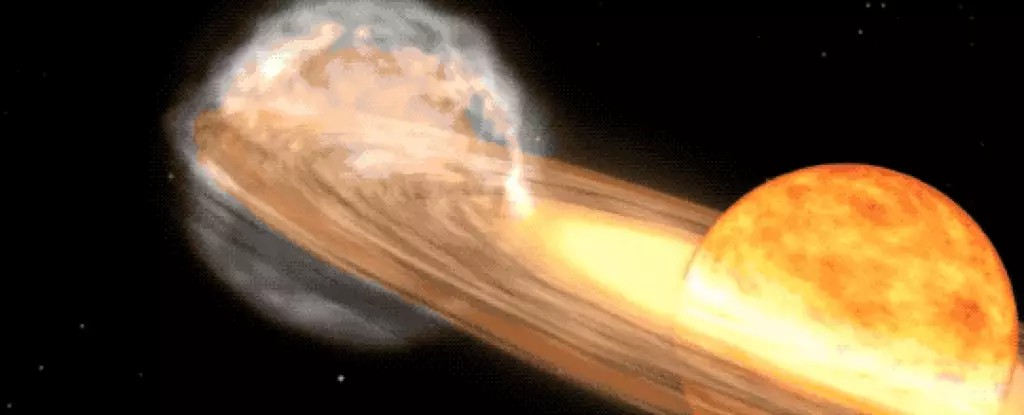In the coming months, a magnificent explosion is predicted to occur approximately 3,000 light years away from Earth. This explosion will take place in a binary star system situated in the constellation Corona Borealis, also known as the “northern crown.” Under normal circumstances, this star system is too faint to be visible to the naked eye. However, once every 80 years or so, interactions between the two stars in this system, which are engaged in a deadly dance, ignite a runaway nuclear explosion. The resulting light from this explosion will travel across the vastness of space, creating the illusion of a new star appearing in our night sky, shining as brightly as the North Star. This extraordinary phenomenon has been witnessed by humans on at least two occasions in history, with the first observation made by Irish polymath John Birmingham in 1866 and a subsequent occurrence in 1946.
Professor Sumner Starrfield, an astronomer from Arizona State University, has dedicated a significant portion of his career studying T Coronae Borealis, also referred to as the “Blaze Star.” Starrfield expressed his anticipation for the nova’s outburst, emphasizing his excitement towards the upcoming cosmic event. Working on and off with T Coronae Borealis since the 1960s, Starrfield is currently in the final stages of preparing a scientific paper that aims to explore the potential insights that astronomers might glean from studying this recurrent nova. According to Starrfield, there are only about 10 recurrent novas within the Milky Way and its neighboring galaxies, making them a rare celestial occurrence. In contrast to normal novas that detonate once every 100,000 years, recurrent novas exhibit periodic outbursts due to the peculiar interplay between their two stars.
The binary star system of T Coronae Borealis involves a red giant, a dying star in its cooling phase that has exhausted its hydrogen fuel and expanded significantly. Paired with the red giant is a white dwarf, the remnant core of a star after it has shed its outer atmosphere. The drastic difference in size between the two stars results in an orbital period of 227 days for the white dwarf as it circles the red giant. Consequently, matter expelled by the red giant accumulates near the white dwarf’s surface, gradually building up to the point where a runaway thermonuclear reaction is triggered every 80 years. This reaction culminates in a massive explosion, rapidly raising the temperature to millions of degrees within seconds.
As excitement builds around the impending outburst of T Coronae Borealis, astronomers around the world are preparing to train their instruments on this celestial spectacle. Notable figures like retired German astronomer Joachim Krautter, who has extensively studied the nova, anticipate that the James Webb Space Telescope will be one of the many observatories capturing this extraordinary event. However, Krautter emphasizes that witnessing this rare cosmic display does not require advanced technology. Enthusiasts and curious onlookers simply need to direct their gaze towards the Corona Borealis constellation for a chance to witness this breathtaking event. Some fortunate sky gazers are already gearing up for another significant astronomical event – a rare total solar eclipse that is set to grace a portion of the United States on Monday, marking a momentous occasion in the year’s astronomical calendar.


Leave a Reply